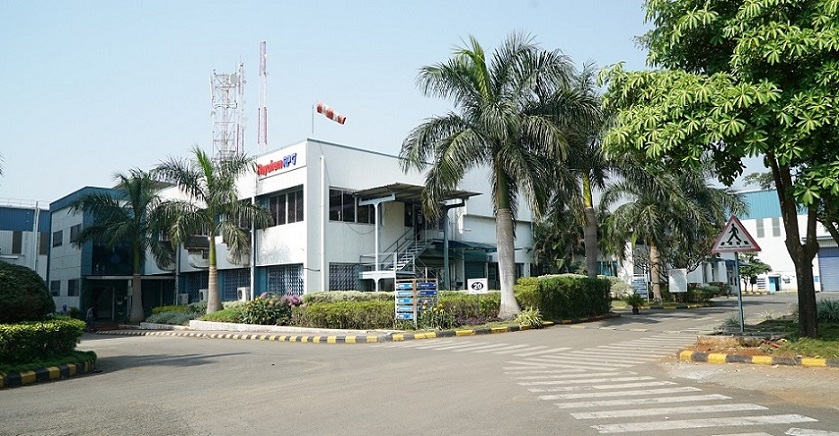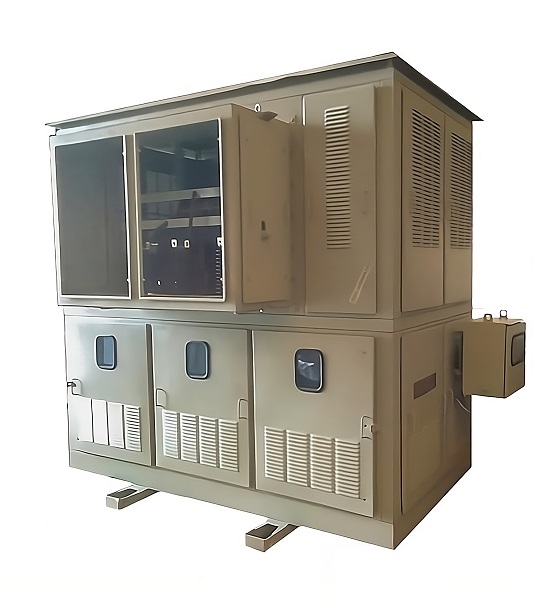Incorporated in 1989, Raychem RPG (P) Ltd is an equal joint venture between US-based TE Connectivity and RPG Enterprises. Raychem RPG has an array of over 250 products spanning from cable glands to power transformers. In this exclusive interaction, we have Parameswaran Iyer, Vice President & Business Head of Transformers, Raychem RPG (P) Ltd, elaborating on the company’s transformer business – the wide product portfolio, in-house testing facilities and application areas. He also gives keen insights into critical industry-related issues like availability of prime grade CRGO steel and India’s adequacy in transformer testing infrastructure. On evolving industry trends, Parameswaran Iyer feels that the demand for dry-type transformers is growing at a much faster rate than the oil-filled counterparts.

Raychem RPG, as we understand, produces a wide range of transformers for diverse applications. Please tell us in brief about the transformers that are manufactured by Raychem RPG.
At Raychem RPG, we manufacture oil-filled and dry type transformers in our facility at Chakan in Pune. For the dry type transformers, our product range includes the cast resin (CR) and the vacuum pressure impregnated (VPI) types.
Our transformers are largely used for distribution of power and for industry-specific applications. The higher power ratings in our portfolio are supplied to industries who use it to step down the voltage from the incoming feeder level to feed their internal power requirements.
We also supply transformers for niche applications in process industries like steel and cement, a few in conventional power generating stations, ports, mines etc. Our dry transformers are used in industries, urban infrastructure and data centers. Many of these are supplied as a part of energy efficiency solutions by OEMs to process industries. We are also strongly supporting the “Make in India” initiative by locally developing and supplying transformers which were previously fully imported.
We have a strong presence in the renewable sector, with significant supplies to the solar industry in the past many years. We also have a product range which will be used to support sustainable energy sources like green hydrogen plants.
In addition to the above we specialize in the design, manufacture and supply of transformers for very special and one-time applications like research institutes.
How do you see the demand for dry-type transformers which are most useful in urban-centric applications?
Dry type transformers are used for indoor applications and are extremely safe when designed and manufactured to suit the specified application. The demand for these transformers is increasing rapidly not only in India but in all parts of the world. This is coming up not only from urban markets, but even industries have started to switch over to dry transformers wherever conditions and requirements permit.
The demand in India is fueled by a number of factors – the boom in the setting up of data centers, rapid urbanization, the growth of infrastructure and industrialization. The growth of metro in Tier-I and Tier-II cities and the proliferation of smart cities are also contributors to this demand.
We have had major supplies of dry type transformers in the steel sector where also we see the demand going up. The combined result of all of the above is that we see this segment growing at a rate faster than the oil segment.

Speaking of industry issues, there is much debate about dual certification from BIS and BEE for distribution transformers. What is your overall take on the subject?
The process of standardization and certification for energy efficiency is a much-needed move and will help both the industry and the users in general.
Today most of the ratings do not have the need for dual certification as there is clarity on the certification requirements based on ratings. However, in future, if the requirements overlap then it is bound to create confusion. The BIS ratings have changed quite rapidly leading to manufacturers having to get their transformers recertified within a very short span of time. This is putting pressure on them in terms of cost and effort. The limited number of labs available for certification and the time taken for certification is adding to their discomfort.
The Indian standards have been following and generally adopting the international standards. Today there is an international standard for energy-efficient transformers which could be adopted and followed. This of course can be altered to suit the Indian requirements. The same can be implemented in a phased manner.
Over the years, the government has been insisting on the use of prime grade CRGO steel to counter the alleged use of inferior or scrap CRGO. Given that domestic production of CRGO is still very limited, do you face shortages in availability of prime grade CRGO?
The insistence on the use of prime grade CRGO will have a significant impact on the quality and performance of transformers and at the same time help conserve valuable energy in the form of lower losses in transformers.
Prime grade CRGO is produced by a very limited number of manufacturers globally. The Indian transformer manufacturers barring a selected few depend on local traders/agents for supply of CRGO. Domestic production of CRGO for high-efficiency transformers is nil and so the dependence is fully on imports. Currently there is a demand supply gap on CRGO due to restrictions on imports from certain countries and some traditional supplies being disrupted due to unrest in some parts of the world. Due to this, availability of CRGO is impacted and this also has an impact on the market prices of the same. These are also some of the reasons for usage of non-prime grade CRGO.
India has the dubious distinction of having the highest failure rate of distribution transformers. What, in your view, could be the basic underlying reasons?

It is true that failure rates of distribution transformers in India is among the highest and well above the average rate seen in developed countries. The reasons in my opinion are multifold.
The distribution transformer market in India has a large number of small and medium scale manufacturers and many of them do not have the capability or infrastructure to produce good quality transformers. The use of inferior quality materials and compromises in the manufacturing processes, impact the quality of the transformers significantly. The tendency of buyers to go with the lowest bidder without really checking on the field performance or attaching a rating to past performance for comparative evaluation does not help segregate substandard quality products from the good ones.
The field performance is also governed by the installation, commissioning and maintenance of the transformers. We see major lapses on this front also which cause transformers to fail. Proper installations will ensure continuity of power and the fact that at most places, even the first rainfall or a mediocre-grade storm causes power disruptions is proof of the inadequate quality of installation and or maintenance.
Power theft, unauthorized connections or increased demand leading to overloading of transformers, are other reasons which cause transformer failures.
Many utilities in the private and public sectors have taken actions and have seen tremendous improvements – so this is something which can be tackled very easily if there is a clear will and direction. It is time that utilities look at the lifecycle cost rather than the cost of purchase and the impact of all of these will become very evident and improvements will come automatically.
Given that India’s demand for transformers is rapidly rising, thanks to power T&D upgrade, renewable energy capacity addition, railway electrification, etc, are you planning capacity expansion at your Chakan plant?
We are in the market of niche products and hence demand for our transformers comes from greater industrialization, growth of infrastructure and renewables. All these sectors are growing currently as we are all aware. We have already completed the first phase of expansion and the next phase is ongoing and expected to be completed within this financial year.
Please tell us about Raychem RPG’s in-house transformer testing capabilities. On the same lines, what is your overall view on India’s testing facilities (ERDA, CPRI, NHPTL, etc), especially for high-rating transformers? Has India’s dependence on foreign labs reduced over the years?

We have a fully equipped transformer test laboratory which has been accredited/certified by the National Accreditation Board for Testing and Calibration Laboratories (NABL). As a result, we can carry out all the routine and type tests on transformers except for short-circuit tests. Our team of qualified test personnel diligently carries out all the tests in line with the requirements of the standards. We have also been able to offer online inspection to our customers and this has helped them to cut down on travel time and greatly eased out the inspection process.
Our set up and the test team have been greatly appreciated by our customers, to the extent that for some of our regular customers we have been certified as green channel suppliers so they solely depend on our certification!
As regards requirement of labs for special tests and certification, India’s dependence on labs outside India continues for higher-rating transformers since we do not have those facilities in India. Special tests on dry type transformers like the certification for environment, climatic conditions and fire (categorized as E#C#F#) are not possible in India. Given our growing demand for these products and also considering the huge export potential, the government should invest in test kinds of labs.
For ratings which can be tested in India, the waiting times for a test slot in our existing laboratories are long. We definitely see the need to make these labs more professional. In addition, acceptance of reports from Indian labs continues to be a challenge in many export markets and for that testing in European labs continues to be a necessity.
Is there any move by Raychem RPG towards “greening” of transformers, say by substituting conventional mineral oil by natural/synthetic ester oil?
Raychem RPG has been a leader in the manufacture and supply of environment friendly “green” transformers. Our first transformer with natural ester oil was supplied way back in 2016 and we still continue to supply transformers with natural and synthetic oils whenever there is a demand. These transformers offer various advantages, but the tendency of customers to go in for low cost products is what is limiting the intake of these types of transformers.
Please discuss how Raychem RPG’s transformers complement the company’s other business verticals so as to offer holistic solutions in the power T&D space?
Our endeavor always is to use the best quality materials and components in our transformers, and we also recommend solutions to customers to enable them to maximize the performance of their assets by using quality accessories.
Raychem RPG is a pioneer in the manufacture and supply of cable termination kits with an enviable performance record. These along with our high-quality surge arrestors and insulating and heat shrinkable sleeves which are also manufactured by us find applications in our transformers. We recommend and also offer these as a package along with our transformers wherever applicable.


